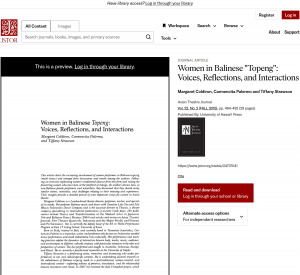Margaret Coldiron
From BASAbaliWiki
Revision as of 15:02, 23 January 2023 by Desyapriliani (talk | contribs) (Created page with "{{PageSponsor}} {{Biography |Full Name=Margaret Coldiron |Pen Name=Margaret Coldiron |Photograph=20230123T150032853Z947333.jpg |Photograph by=private |Link photo=https://www.e...")
- Full Name
- Margaret Coldiron
- Pen Name
- Margaret Coldiron
- Photograph by
- private
- Link to Photograph
- https://www.east15.ac.uk/people/coldi70509/margaret-coldiron
- Website for biography
- Place
- Essex England
The place does not exists yet in wiki, click to create it - Related Music
- Related Books
- Related Scholars Articles
Biography
In English
In Balinese
In Indonesian
Examples of work
Nothing was added yet.









Enable comment auto-refresher